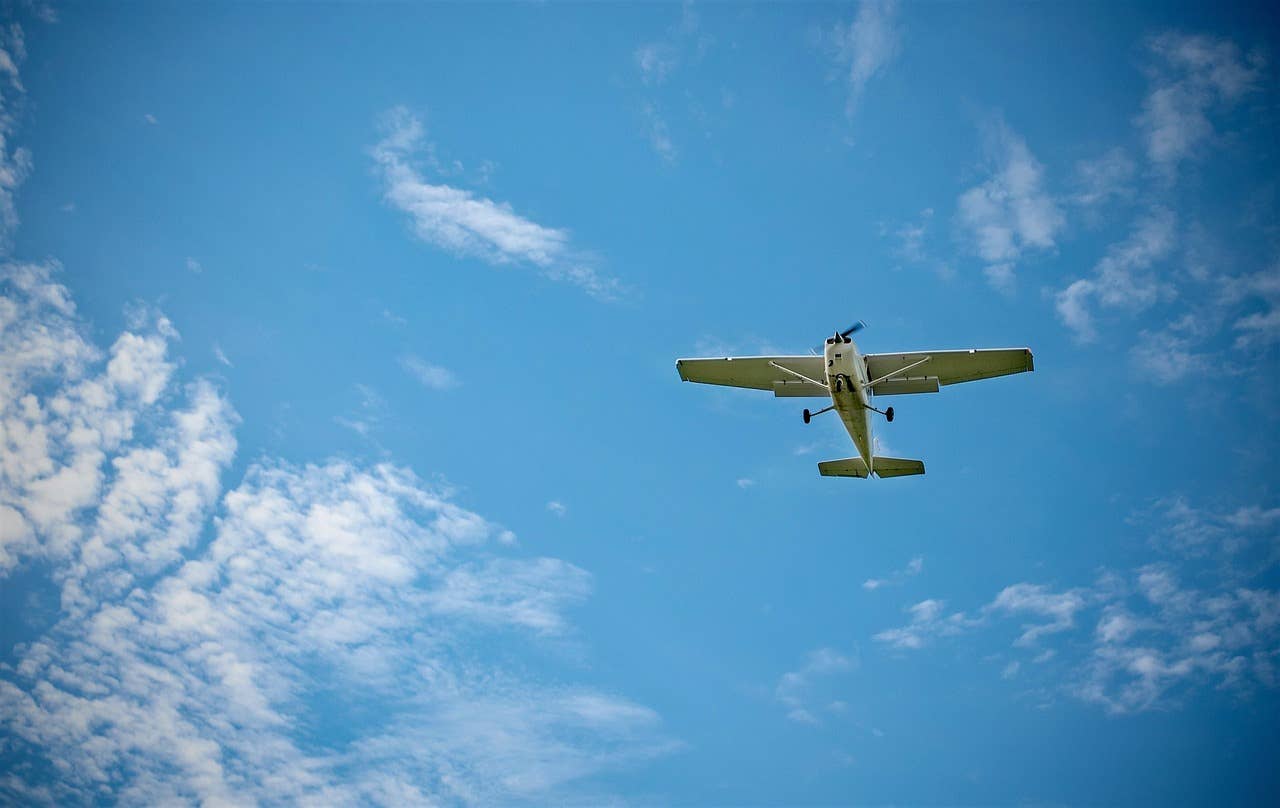Respect the Pattern at All Times
It’s more than altitude and entries when it comes to airport traffic.

It’s important do your homework and pay attention in the pattern, especially when visiting an unfamiliar airport. [Pixabay]
It was a bright spring day, perfect for a first solo. I sent a fledgling up at the nontowered airport with instructions to do three takeoffs and landings, then return to the ramp. There was another first solo already underway. Traffic pattern altitude (TPA) at the airport is 1,500 feet msl. Field elevation is 472 feet. There is one runway, 15/33. This information is published on the VFR sectional, and in the chart supplement. And, one would think, this information would be accessed and or referred to by the pilot in command of any aircraft before arriving at the airport.
I watched the first lap, hand-held radio in hand. It went great, so I ducked back inside the FBO to answer a question from the office manager about the schedule. I hadn’t been inside for more than five minutes when one of the airport regulars came in saying, "There is someone flying right traffic for Runway 15. And they are low."
These were words that struck fear into my heart. I still had my radio on and was relieved to hear my learner making his radio call for crosswind—doing left traffic. I rushed outside. He was definitely doing left traffic and climbing to the appropriate altitude. I joined the other CFI who had a learner up. He was standing on the ramp, shaking his head as he watched the aircraft on right traffic. It wasn’t his learner, either.
I turned up the volume on the radio. We exchanged a look of disbelief as the pilot of the wrong-way airplane giggled her way through a report of being on downwind for Runway 16.
The office manager got on the unicom to remind pilots that the airport used left traffic and the pattern altitude was 1,500 feet for Runway 15. She said it in her Mom voice.
A female voice announced she was turning right base for Runway 15. A man’s voice jumped on the radio and informed her that the airport had left traffic. The response was a giggly, "Sorry about that!" and she kept coming. As they rolled on to final, we could see two people in the aircraft—a woman in the left seat, a man in the right.
By now there was an audience on the ramp. One of the CFIs recognized the tail number. It traced back to a flight school at another airport. The chief CFI got on the radio and suggested the errant pilot either land or depart the pattern. The reply was a giggly "OK!" followed by a low approach and go-around.
I was relieved to hear my learner announce he was on the 45 for downwind. He later told me had departed the pattern when he realized that had he turned base he would have been nose to nose with the other airplane. One of the lessons I taught him was that the right of way was not a right worth dying for. It is far better to depart the pattern than to play chicken with another aircraft.
Our chief called the flight school of the rogue airplane. We later learned the chief at the rogue school told his instructors to avoid our airport for a while. Really? That's how you're going to address this? What about remedial education? Wouldn't it be better if you made sure the CFI and learners knew how to determine pattern altitude, direction of turns, etc., you know, and how to read a sectional and chart supplement and look up airport pattern information in the Aeronautical Information Manual (AIM)?
It was noted that the airport is a mere 5 nm from an airport with Runway 16/34 that does use right traffic. But that airport sits next to an interstate, and there is a horse racing track just west of it that sticks out like a frog in a punch bowl. Our airport is actually an airpark nestled in between trees, and if you are below 2,000 feet msl, you probably won’t see it until you are just about on top of it. It was suggested that perhaps the learner on the rogue airplane and the CFI were not familiar with the area and confused the two airports.
I am not sure what bothered me the most about that event. The fact the pilot and CFI didn't do their homework as required by FAR 91.103, the fact they couldn't read the sectional—which notes field elevation that would have given her a clue about the TPA and is missing the letters RP that denote right pattern for the airport—or the fact she kept giggling. The pattern is too busy a place to act squirrelly in.
Learn the Pattern on the Ground
It is a lot easier to learn the pattern on the ground than in the air. It should begin with a review of proper procedures. Information is best gained from the AIM, Airplane Flying Handbook, airport chart supplements, and the FAA’s Aeronautical Chart Users’ Guide.
Be sure to discuss pattern entry. You may need to overfly the pattern at 500 feet above the TPA, then maneuver for the 45 entry at midfield on downwind. The 45 is part of the pattern, so be at pattern altitude. Make sure the learner is aware that pattern altitudes vary and often based on field elevation. The learner who trained at a field with an elevation of 20 feet msl and a TPA of 1,000 will be in for a rude shock when they head to an airport with a TPA of 1,500 because of a field elevation of 488.
Departure procedures can vary as well. Depending on the airspace, there may be published VFR departures. King County International Airport-Boeing Field (KBFI) in Seattle is a good example. At airports without published departures, it is often safer to get out of the pattern then begin the climb to altitude because it lessens the chance of colliding with someone flying over the airport.
Learners can become very stressed about what heading to fly on crosswind, downwind, and base. A demonstration that each turn is the previous heading plus 90 degrees does wonders to calming these concerns.
Teach learners that the presence of a control tower in operation does not relieve the pilots of the need to have their head on a swivel to see and avoid other aircraft.
Different Aircraft, Different Procedures
Single-engine airplanes are not the only aircraft in the pattern. Some learners are surprised to see helicopters at lower altitudes—they have their own set of FAA regs to follow.
- READ MORE: Use Your Checklist
The larger and faster the airplane the more room (read that altitude) it needs to maneuver. For example, twin-engine aircraft are considerably faster than most single-engine models and take longer to slow down. They will most likely overtake single-engine aircraft, so be prepared to depart the pattern and reenter on the 45. Sometimes there is a higher TPA at airports with a lot of turbine traffic for jets and turboprops to use.
It's much better to put extra time on the Hobbs and in your logbook than end up on the 6 o'clock news.

Subscribe to Our Newsletter
Get the latest FLYING stories delivered directly to your inbox






